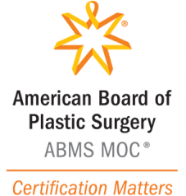Mountain West Plastic Surgery
60 Four Mile Drive, Suite 11
Kalispell, MT 59901
Phone: (406) 609-0210
Fax: (406) 609-0211
Monday–Friday: 8 a.m.–5 p.m.
Gynecomastia Surgery
If you’re a man who’s embarrassed because your breasts are overly developed, gynecomastia surgery at our Kalispell, Montana, plastic surgery practice can provide relief. Our board-certified plastic surgeons, Dr. Michael Hromadka and Dr. Michelle Spring, design a surgical plan to address your specific situation and create a more masculine-looking chest. Men come to our practice from Whitefish and Great Falls, MT; Coeur d’Alene and Sandpoint, ID; and throughout the Northwest to feel more confident with and without a shirt.
What Is Gynecomastia?
Gynecomastia is a relatively common condition that can affect both adolescent boys and men. The condition involves excess glandular breast tissue that can cause males to be self-conscious about their appearance. Another condition, called pseudo-gynecomastia, occurs when fat is the reason for overly large breasts. The condition may affect one or both breasts, sometimes unevenly.
What Causes Gynecomastia?
Gynecomastia is often caused by hormonal imbalances. This occurs when conditions block the effects of testosterone, reduce testosterone production, or increase estrogen levels. Gynecomastia that occurs during puberty is common and often temporary. The condition also affects men after age 50.
Other reasons for gynecomastia include:
- Using drugs such as anabolic steroids and marijuana
- Taking certain prescription medications
- Thyroid issues
- Obesity (which results in more estrogen production)
If a medical condition causes your hormonal imbalance, it’s important to treat the underlying cause.
What Happens During Gynecomastia Surgery?
The techniques Dr. Spring and Dr. Hromadka use vary depending on whether glandular tissue or fatty tissue is the primary cause of enlarged breasts.
The surgeons remove glandular tissue using a scalpel. They typically make an incision either on the edge of the dark skin surrounding the nipple, called the areola, or in the underarm area. These locations minimize the appearance of scarring. Your surgeon removes excess glandular tissue and, if needed, fat.
For patients whose enlarged breasts are caused by fatty tissue, the surgeons typically use liposuction. Small incisions made at the edge of the areola provide access for the straw-like cannula, which is used to break up the fat before suctioning it from the chest.
Meet Our Surgeons
The combination of surgical skill and decades of experience sets Dr. Spring and Dr. Hromadka apart from other plastic surgeons not just in Kalispell, but throughout Montana and the Northwest. Assisted by Kristy Ehrmantraut, PA-C, their surgical physician assistant, Dr. Spring and Dr. Hromadka are known for their down-to-earth personalities and for spending the time to truly understand their patients’ goals.
How Long Is Recovery After Gynecomastia Surgery?
Because patients all heal at their own pace, it’s difficult to pinpoint specifically how long it will be before you can return to work or school. If your procedure only involves liposuction, you may need only a few days off. Surgical excision of glandular tissue may require a bit more time.
Swelling and bruising are normal, and you can manage any discomfort with a prescription or over-the-counter pain medication.
Choose a Board-Certified Plastic Surgeon
Are you ready to discover how gynecomastia surgery at Mountain West Plastic Surgery can help you become more confident in your appearance? To discuss your options with one of our two highly trained plastic surgeons, request a consultation using the online form. Or you can call our office at (406) 609-0210 to schedule an appointment.
We will discuss your options and goals in depth and provide you with a personalized quote for your procedure. Please visit our financing page to explore your payment options.






